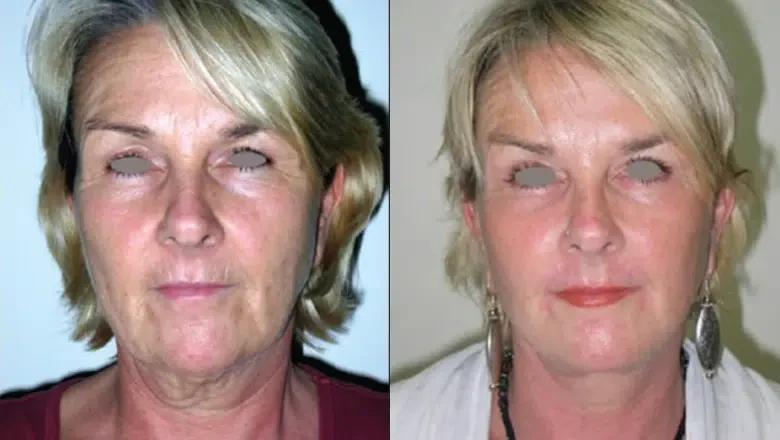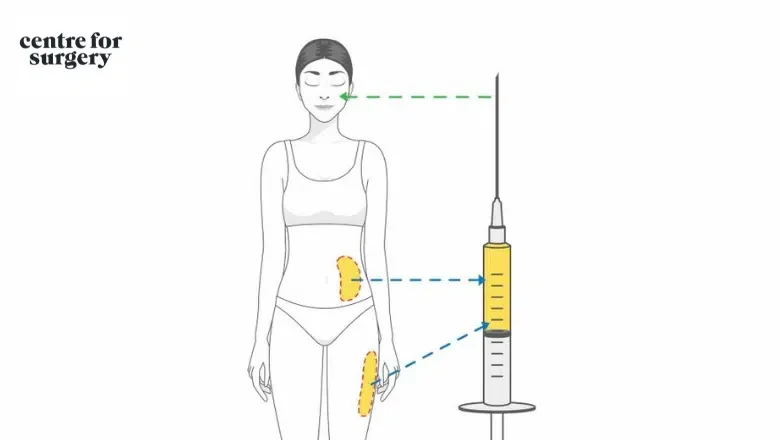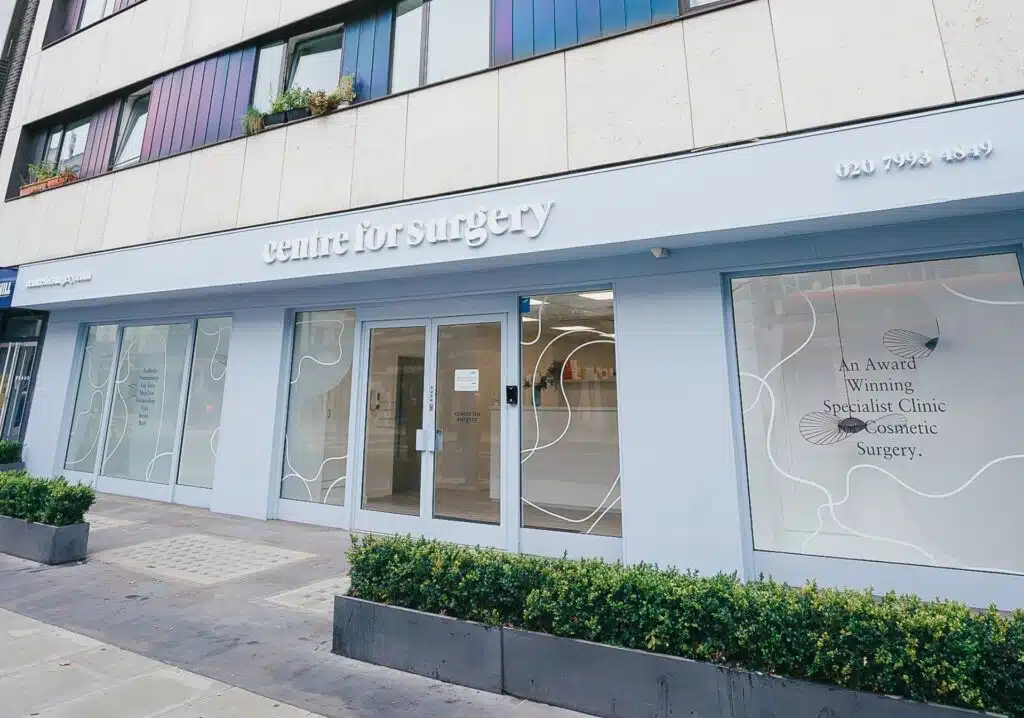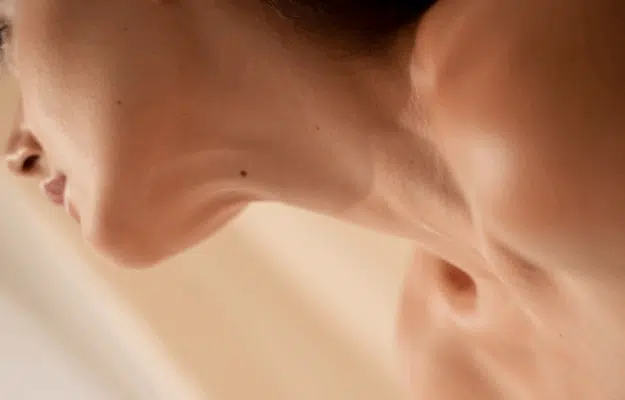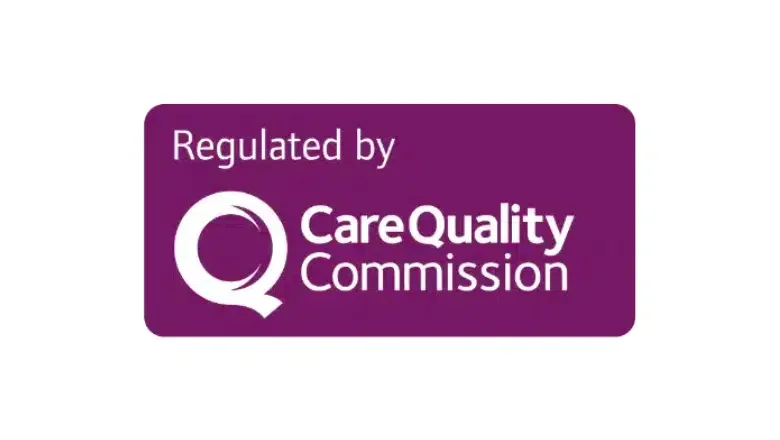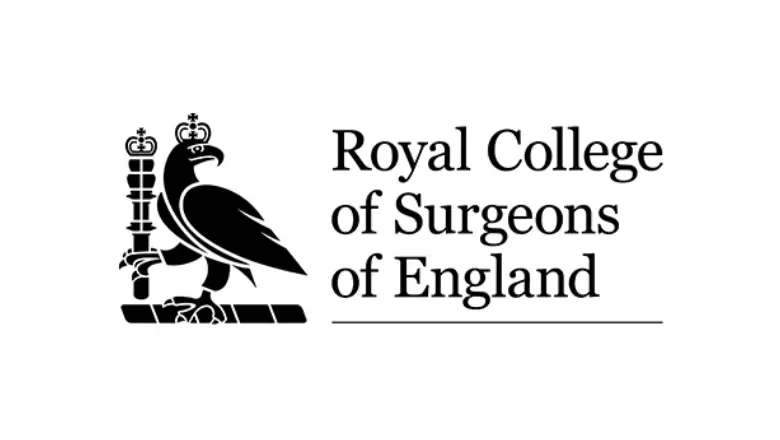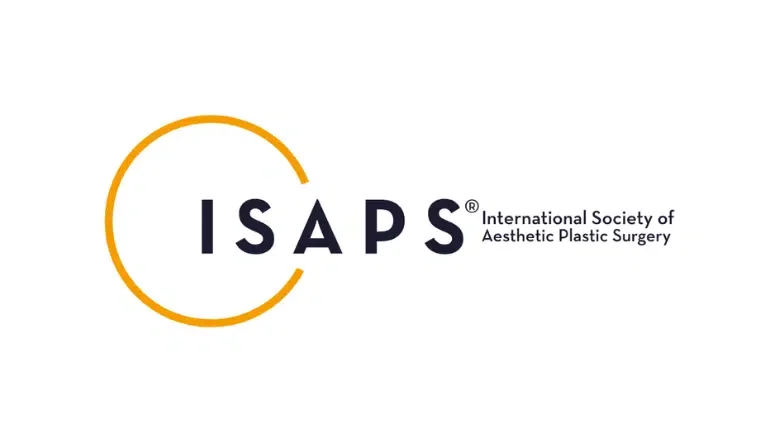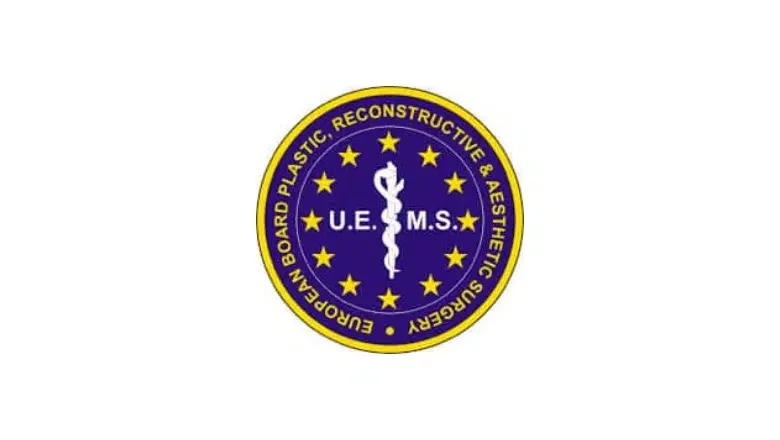High Cheekbones Compared to Low Cheekbones: Understanding the Differences and Treatment Options
Cheekbones are an interesting part of our faces that people around the globe pay attention to. In some cultures, people think that high cheekbones are attractive, while in others, low cheekbones are preferred. Various research studies have shown that we tend to quickly judge people by looking at their faces. For example, just by noticing someone’s cheekbones, we might think they are friendly, full of energy, or powerful.
You can figure out if you have high or low cheekbones by feeling the bone under your cheek, known as the zygomatic bone. If this bone is at the same level as the bridge of your nose, then you have high cheekbones. You have low cheekbones if it’s at the same level as your nostrils.
A lot of what decides the position of your cheekbones is your genes and your ethnic background. It’s something you inherit from your family and ancestors. If you ever think about changing how your cheekbones look through a beauty treatment, you must talk to an expert plastic surgeon. If you’re in London, you could visit Centre for Surgery to get all the information you need. We can explain how the procedure works, how much it might cost, and what risks might be involved.
Keep reading if you’d like to find out more about cheekbones. This article will explain how you can find out where your cheekbones are, the differences between having high or low cheekbones, and what you could do if you want to change how your cheekbones look. It’s a fascinating subject, and there’s a lot to learn!
What Are Cheekbones and Where Are They Located?
Cheekbones are found just beneath the eye sockets and are a key part of the human skull. Scientifically known as the zygomatic bones, these bones stick out from the face and, along with the skin and cheek muscles, form the shape of the cheek. This structure is essential for keeping food inside the mouth when we chew. Besides giving our face its shape, cheekbones also have a role in our daily activities. They help us to talk, chew our food, and make different facial expressions.
As we grow older, our cheekbones become more noticeable. This happens because the fat in our face reduces, and gravity pulls our skin downwards as we age. Loss of bone in the nose and cheeks can also occur, which is normal for getting older. The appearance of your cheekbones can also be affected by your weight. If there’s more fat over your cheekbones, they’ll be less visible. Factors like smoking and using drugs can also influence the amount of fat on your face.
To determine if you have high or low cheekbones, you can look at them in the mirror once you’ve found them. If the ends of your fingers are at the same level as your nostrils when you touch your cheekbones, then they are low. You have high cheekbones if they are at the same level as the top of your nose or nearer to your eye.
It’s worth noting that there’s no right or wrong regarding cheekbones. Everyone’s face is different, and what looks attractive is often a matter of personal opinion. Different cultures worldwide value high or low cheekbones for various reasons, and other factors also come into play when determining how good-looking someone is.
High Cheekbones vs Low Cheekbones: What’s the Difference?
The position of your cheekbones, whether high or low, is primarily determined by your individual genes and your ethnic background. Your gender can also influence the level of your cheekbones, as men often have higher cheekbones compared to women. However, it’s worth mentioning that the height of your cheekbones doesn’t affect their function; it only helps shape your face’s appearance. So, what makes high cheekbones more appealing to some?
High Cheekbones
People with high cheekbones usually have the broadest part of their face right below their eyes. These cheekbones can be easily spotted and are often associated with attractiveness. In men, high cheekbones, along with a strong jawline and “hunter eyes,” are believed to add to a masculine and confident appearance. Male celebrities with noticeable cheekbones are often considered particularly good-looking. In women, high cheekbones are also attractive, especially with symmetrical facial features. High cheekbones can make a face look more distinct as a person ages, since the skin may cling to the elevated bones better when gravity pulls it down.
Low Cheekbones
On the other hand, people with low cheekbones might find their cheeks lack definition. The widest part of their face tends to be at the same level as the nostrils. Some even believe that those with low cheekbones might appear more unsociable or introverted, preferring their own company and not engaging in lively conversations. This, of course, is a stereotype and doesn’t hold true for everyone.
But why is there a preference for high cheekbones? It might be tied to cultural ideals of beauty and what’s considered strong or refined in facial structure. High cheekbones can give the face a more sculpted look, which many consider attractive. Celebrity culture, media, and fashion might also play a role in shaping these preferences.
How Does Cheekbone Position Change As We Age?
As individuals age, the appearance and perceived prominence of cheekbones undergo a notable transformation, though the bones themselves remain stationary. This alteration in the appearance of cheekbones from a more elevated to a seemingly lower position is attributed to many ageing-related factors, each contributing to the overall facial contour changes experienced over time.
One of the primary contributors to these changes is the loss of skin elasticity. Over the years, the skin begins to lose its vital proteins, such as elastin and collagen, crucial for maintaining firmness and elasticity. This reduction in skin integrity means that it can no longer snugly adhere to the cheekbones’ contours. Consequently, the cheeks appear more recessed or sunken, impacting the once pronounced high cheekbones.
Additionally, the process of ageing affects the distribution and density of facial fat. A natural reduction and downward shift in the fat beneath the facial skin directly impacts the volume surrounding the cheekbones, making them appear less defined. This loss of volume contributes to the illusion of the cheekbones sitting lower on the face than they might have in one’s youth.
Muscle tone in the face also diminishes with age, further influencing the facial structure’s definition. A decreased facial muscle tone can lead to a less defined appearance, with features such as the cheekbones becoming less distinct. This reduction in muscle definition can make the cheekbones appear to recede.
Moreover, changes in bone density can affect the facial skeleton, including the cheekbones. A decrease in facial bone density can lead to a less pronounced cheekbone appearance and, in some cases, asymmetry between the cheekbones. This change in bone density can contribute to the overall perception of cheekbones appearing lower and less prominent than in earlier years.
RELATED: Facial Skin Ageing Over Time: What to Expect at 30, 40, 50
Surgical Solutions for Enhancing Cheekbones
If you’re looking to enhance the appearance of your cheekbones and address signs of ageing, surgical solutions might be a suitable option for you. Here’s an overview of some surgical methods that can provide a more youthful appearance to the cheeks and face:
1. Facelift
A facelift, also known as rhytidectomy, is a surgical procedure designed to counteract the effects of ageing on the face.
Age-related Changes Addressed by a Facelift:
- The bones, including cheekbones, may change shape and size.
- Skin loses elasticity and fat, leading to sagging cheeks.
- Additional folds or wrinkles may develop around the chin, neck, or mouth corners.
Facelift Options:
- Traditional Facelift: Helps reduce signs of ageing, giving a younger and rejuvenated appearance.
- Neck Lift: Often performed alongside a facelift to ensure a natural look by addressing sagging in the neck area.
- Mini Facelift: A less invasive option focusing on specific areas.
- Brow Lift: Lifts and tightens the forehead area.
RELATED: Can You Combine Facial Fat Transfer With a Facelift?
2. Facial Fat Transfer
Facial fat transfer is another method to enhance the cheeks, providing a natural look.
How It Works:
- Fat is harvested from your body (such as the abdomen or thighs).
- The collected fat is then transferred to desired facial areas like the cheeks, under the eyes, or nasolabial folds.
- Results in minimal scarring and offers a natural appearance.
Combining with Other Procedures:
- Consider pairing facial fat grafting with other rejuvenating treatments like Lower Face Lift and Neck Lift, Platysmal Band treatment, or Chin Liposuction for a complete facial makeover.
- Customised plans ensure the best individual outcome for long-term aesthetic results.
3. Buccal Fat Removal
Buccal fat removal is a cosmetic procedure designed to refine and sculpt the facial silhouette by eliminating excess fat from the lower cheeks. While this technique does not directly increase the height or prominence of the cheekbones, it plays a crucial role in accentuating them through the enhancement of facial contours. By reducing the volume of buccal fat, the procedure creates a more defined contrast between the lower cheeks and the cheekbones, thereby indirectly highlighting the cheekbones’ structure.
RELATED: How to Reduce Chubby Cheeks
The essence of buccal fat removal lies in its ability to subtly alter the facial landscape to achieve a more chiselled and aesthetically pleasing appearance. The lower cheeks, often areas where excess fat can accumulate, can sometimes mask the natural architecture of the cheekbones. By carefully removing a precise amount of buccal fat, cosmetic surgeons are able to reduce this volume, which in turn makes the cheekbones appear more pronounced and sculpted.
This procedure is particularly beneficial for individuals seeking a more defined facial profile without requiring direct augmentation of the cheekbones. It offers a less invasive alternative to enhance the natural contours of the face, focusing on the principle that sculpting the surrounding areas can significantly impact the overall perception of cheekbone prominence.
RELATED: Chubby Cheeks – How to Get a Slimmer Face
Buccal fat removal is tailored to the individual’s facial structure, ensuring harmonious results that enhance the natural beauty of the person’s features. The outcome is a more balanced and proportionate facial appearance, with cheekbones that stand out more distinctly against the newly sculpted lower cheek area.
RELATED: Non-Surgical Alternatives to Buccal Fat Removal
Non-Surgical Options for Defined Cheekbones: Cheek Fillers
If you’re interested in enhancing the appearance of your cheekbones but prefer a non-surgical method, cheek fillers might be an excellent solution for you. Here’s an overview of this non-invasive option:
What Are Cheek Fillers? Cheek fillers are a popular cosmetic treatment used to add volume and definition to the cheeks without surgery. They can provide a more youthful appearance by replacing lost volume and giving the cheekbones a more pronounced look.
How Do Cheek Fillers Work? Cheek fillers are typically made from hyaluronic acid, a sugar molecule naturally occurring in the body. A professional administers the filler through injections, using a soft injectable gel that adds volume to the desired areas.
Benefits of Cheek Fillers:
- Non-Surgical: This is a great advantage for those who want to avoid surgery, offering a quicker and often more affordable option.
- Natural-Looking Results: Hyaluronic acid fillers tend to blend well with the body’s tissues, providing natural-looking enhancement.
- Customisable: The amount and placement of the filler can be tailored to meet individual preferences, allowing for personalised results.
How Long Do Cheek Fillers Last?
One common question about cheek fillers is their longevity. The duration of the results can vary from person to person, generally lasting between 6 months and 2 years. Factors influencing this time frame include the type of filler used, the individual’s metabolism, and how quickly the body breaks down the filler.
Considerations and Consultation:
- Professional Administration: Always seek treatment from a trained and licensed professional with cheek filler experience to ensure safety and optimal results.
- Possible Side Effects: While generally considered safe, cheek fillers can have side effects like swelling, bruising, or discomfort at the injection site. Discuss these possibilities with a healthcare provider.
-
Maintenance: Depending on how long the fillers last for you, regular maintenance treatments might be necessary to keep the desired look.
Cheekbone Contouring with Make-Up Techniques
Enhancing the appearance of your cheekbones doesn’t always require a visit to a cosmetic specialist. With some clever make-up techniques, you can contour your cheekbones to create a more sculpted and appealing look. Here’s how you can do it:
1. Identify Your Cheekbones (Malar Bones):
Feel for your cheekbones by placing your fingers on the sides of your face, and locate the hard bone beneath the softer part of your cheeks.
2. Apply Contour Make-Up Beneath the Cheekbones:
- Select a contour shade that is slightly darker than your natural skin tone.
- Apply the contour makeup just beneath your cheekbones (malar bones).
- Use a contour brush or make-up sponge and blend the contour make-up upwards towards your ears, following the natural line of your cheekbones.
- Remember, less is more, and you can always build up the intensity.
3. Highlight the Top of the Cheekbones:
- Choose a highlighter that complements your skin tone; it should be a shade or two lighter.
- Apply the highlighter to the top of your cheekbones, where the light naturally hits your face.
- Blend well, ensuring that there are no harsh lines.
- The highlighter will catch the light and enhance the appearance of your cheekbones, giving them a lifted and radiant look.
4. Add Blush for a Natural Flush (Optional):
- Applying a touch of blush on the apples of your cheeks can add a natural flush and blend the contour and highlighter together.
- Use a shade that complements your skin tone and the rest of your make-up.
5. Set Your Make-Up:
- Finish with a setting spray or powder to ensure that your contoured cheekbones stay perfect throughout the day.
Tips and Warnings
- Practice makes perfect; don’t be discouraged if it takes a few tries to master the technique.
- Always blend well to avoid noticeable lines and patches.
- Consider your face shape and what you want to achieve with contouring. Different face shapes may require slightly different techniques.
- Use quality make-up tools for the best results.
By following these steps, you can create the illusion of higher, more defined cheekbones. Contouring with make-up can be a fun and creative way to experiment with your appearance without any permanent changes. Whether you’re preparing for a special occasion or just want to enhance your daily look, cheekbone contouring with make-up can provide beautiful results.
What Face Shape is Considered to be the Most Attractive?
Face shape is often a subject of interest and debate when defining beauty. Different cultures and individuals have varied preferences, and what’s considered attractive can change over time. However, some studies and general perceptions point to certain face shapes being more appealing. Here’s a look at two such shapes:
1. Heart or V-Shaped Face
The heart or V-shaped face is often cited as an attractive face shape for both men and women.
Characteristics:
- Forehead: Typically broad.
- Chin: Slightly pointed.
- Jawline: Quite narrow.
- Cheekbones: Wide and often prominent.
Why It’s Considered Attractive:
- Mathematical Appeal: Some believe that the proportions of a V-shaped face correspond to mathematical concepts of beauty.
- Youthful Appearance: This face shape is often associated with a youthful look, which can add to its appeal.
2. Diamond Face Shape (Especially for Women)
For women, the diamond face shape is sometimes considered particularly attractive.
Characteristics:
- Forehead and Jaw: Both are narrow.
- Cheekbones: High and often the widest part of the face.
- Chin: May be pointed.
Why It’s Considered Attractive:
- Feminine and Sophisticated: The diamond face shape is often associated with femininity and a sophisticated appearance.
RELATED: Facial Beauty Standards – What is the Golden Ratio?
Ethnicities Known for High Cheekbones
High cheekbones are a prominent feature in several ethnic groups, often considered a sign of beauty or symbolic of certain values. Here’s a closer look at the ethnicities known for high cheekbones and what they might signify in various cultures:
1. Asian Communities
- Particularly Notable In: Some East Asian cultures.
- Cultural Significance: In certain Asian societies, high cheekbones are seen as a symbol of vitality and energy. They may also be associated with qualities such as bravery and commitment.
2. African Communities
- Particularly Notable In: Various African ethnic groups.
- Cultural Significance: High cheekbones can be a common genetic trait among some African communities, although the cultural significance might vary across different regions and tribes.
3. Amerindian (Indigenous Peoples of the Americas)
- Particularly Notable In: Many indigenous peoples across North, Central, and South America.
- Cultural Significance: High cheekbones are often seen as a distinctive feature among Amerindian populations, although the interpretation of this trait may differ among various groups.
4. Western Perception
- Cultural Significance: In the UK, high cheekbones are often viewed as attractive. Some believe that those with higher cheekbones appear bright and perceptive.
The Superiority of Surgical Procedures for Achieving Prominent Cheekbones
Surgical interventions are widely regarded as the most effective approach to enhancing the facial structure to achieve high-set cheekbones. This preference stems from the permanence and customizability of surgical methods, setting them apart from non-surgical alternatives that might only provide temporary and less noticeable improvements. Surgical techniques, such as cheek implants and autologous fat transfer, stand out for their ability to deliver a substantial and definitive enhancement to the cheekbones.
Cheek implants, for instance, are an excellent option for individuals seeking a dramatic and lasting change to their cheekbone prominence. These implants are specifically designed to augment the cheekbone area, creating a more defined and elevated appearance. What makes surgical approaches particularly appealing is their ability to be tailored to the unique contours of an individual’s face. This custom design ensures that the results are effective and harmonious with the rest of the facial features, enhancing overall aesthetic appeal.
Moreover, despite the higher initial investment compared to non-surgical options, the long-term benefits of surgical cheekbone enhancement justify the cost. Surgical methods provide a one-time solution that eliminates the need for repeated treatments, offering a permanent resolution to achieving the desired cheekbone elevation. This permanence ensures that individuals can enjoy their enhanced facial contours without the concern of their results diminishing over time.
FAQs about High vs Low Cheekbones
What does it mean to have high cheekbones?
High cheekbones are closer to the eyes, usually at the same level as the nasal bridge. If you’re curious about where your cheekbones are, you can use this method:
- Place your thumbs over your ear canal and your index fingers at your nostrils.
- Slowly draw both fingers together until they meet.
- Your cheekbones are at the centre just beneath the skin. You have high cheekbones if they meet at the level of the upper part of your nose or closer to your eye. You have low cheekbones if they meet at the level of your nostrils.
Which ethnicities are known for having high cheekbones?
High cheekbones are a distinct facial feature particularly prominent in several ethnic groups, including Native Americans, East Asians, and Africans. These communities often regard high cheekbones as a hallmark of beauty and a desirable trait. The prominence of cheekbones within these ethnicities not only defines facial structure but is also celebrated as part of their cultural heritage, embodying a sense of identity and attractiveness.
Do cheekbones become more prominent as we age?
Contrary to some beliefs, cheekbones do not become more pronounced with age; instead, they tend to appear less defined over time. This change in appearance is primarily due to a combination of factors associated with the ageing process. As individuals age, they experience a loss in skin elasticity, a decrease in facial volume, and a reduction in bone density. These changes collectively contribute to the softening of the cheekbones’ appearance, making them seem less sharp and pronounced than in younger years. The loss of definition in cheekbones with age is a natural part of the ageing process, reflecting the complex interplay between skin, fat, muscle tone, and bone structure in the face.
Are low cheekbones attractive?
Beauty is subjective, and what’s considered attractive varies among different cultures and individuals. While some societies and influencers may perceive high cheekbones as more beautiful, low cheekbones are not universally regarded as less appealing. Preferences differ, and the belief that high cheekbones are more attractive is influenced by specific cultural norms, media, and individual taste.
What is the most attractive face shape?
The concept of attractiveness, especially regarding the shape of one’s face, is highly subjective and can vary widely among different people and cultures. However, it is commonly believed that an oval face shape holds a universal appeal. This preference is due to the oval face’s balanced proportions, which contribute to a sense of facial symmetry and harmony. This symmetry is often associated with beauty, making the oval face shape a widely admired aesthetic standard across various cultures and communities.
About Centre for Surgery
We are more than just a medical facility; we are a home for transformation and rejuvenation. Located in the heart of London, we pride ourselves on being a leader in cosmetic and aesthetic treatments, providing the highest standard of care and innovative procedures.
Our Philosophy
Our approach is patient-centric, focusing on understanding your individual needs and desires. We believe in an honest and transparent consultation process, where we explain every detail of the procedure, its cost, and the potential risks involved. Your well-being and satisfaction are at the forefront of everything we do.
Our Team
We are home to some of the UK’s most skilled and experienced plastic surgeons. Our specialists are highly qualified, fully licensed, and dedicated to continuous professional development. They are trained in the latest techniques and technologies, ensuring you receive the best possible care.
Our Services
We offer a wide range of surgical and non-surgical treatments:
- Facial Surgery: Facelifts, Brow Lifts, Rhinoplasty, and more.
- Breast Procedures: Enhancements, Reductions, Reconstructions.
- Body Contouring: Liposuction, Tummy Tucks, Arm Lifts, etc.
- Men’s Aesthetic Treatments: Tailored to the unique needs of our male patients.
- Non-Surgical Options: Anti-wrinkle injections, Dermal fillers, Fotona4D, Morpheus8
Why Choose Us?
- State-of-the-Art Facilities: Our Baker Street clinic is equipped with cutting-edge technology.
- Customised Care Plans: Each treatment plan is tailored to your specific needs and goals.
- Patient Safety: Safety protocols are in place to ensure a secure and comfortable experience.
- Financing Options: We offer various financing plans to make treatments more accessible.
- Aftercare Support: Our commitment to your well-being continues even after the procedure with thorough follow-up care.
Get in Touch
Are you considering a transformation? Trust Centre for Surgery for your next cosmetic procedure. Schedule a consultation with one of our expert surgeons to explore the best options for you. Call us today on 0207 993 4849. Let us help you embrace a new you!

